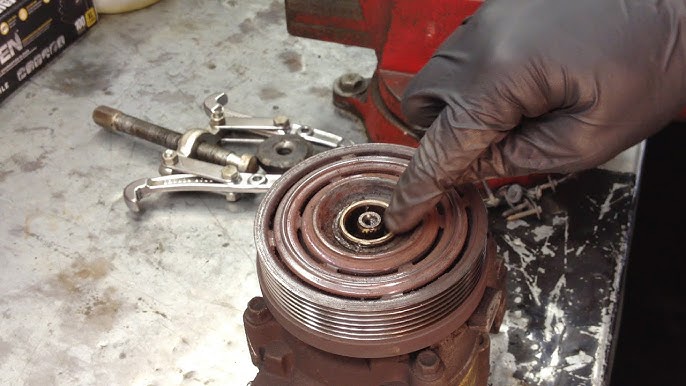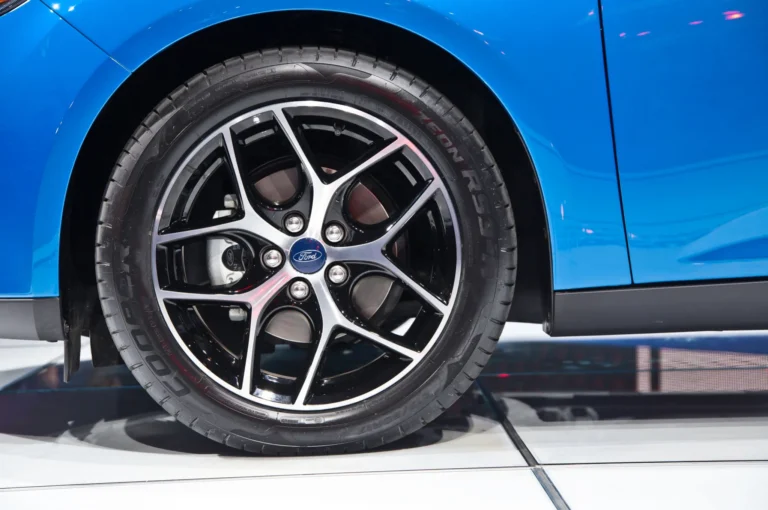Head gasket failure
Last Updated on July 22, 2024 by Mutiara
Blown head gaskets are one of the worst things that can happen to an engine, other than throwing a rod or hitting valves. A blown head gasket can cause:
- Coolant to mix with the oil which destroys bearings.
- Misfire, loss of power, and poor gas mileage if it is leaking compression.
- Overheating if compression gasses are leaking into the coolant or if coolant is being lost.
In many cases the vehicle can still be driven, but only for a short duration until the effects listed above cause the engine to overheat and break down, often times making it as valuable as scrap metal. Many times vehicles will be sold with head gasket problems in their infant stage and the owner may not notice the problem until the car is driven for 10-15 minutes and the temperature gauge suddenly jump to the maximum reading as the engine is overheating.
Causes
1. Overheating.
When the engine starts to run hot thermal expansion between the cylinder head and the block will exceed the strength of the head gasket, crushing the armor between cylinders. This usually happens in the center cylinders because there is a higher concentration of heat in that area of the engine. After that happens the head gasket loses it’s seal and begins to leak compression and/or coolant.
Proper cooling system maintenance can go a far way to prevent head gasket failure. When replacing a head gasket, the point of failure in the cooling system has to be fixed as well to prevent the head gasket from failing again. Multiple areas in a cooling system can be responsible, such as: broken fans, clogged/leaking radiators, failed water pump bearings, leaking water pumps, leaking gaskets, tainted coolant, and etc.
Sometimes the problem is not the cooling system fault, but the way the manufacturers designed the cooling jacket and the rest of the block and cylinder head. One example is the Honda Civic 1.3L and 1.5L engines, which were notorious for having a hot spot in the center. Most aftermarket replacement gaskets for those engines have extra armor in the middle to prevent the gasket from being crushed.
2. OEM Manufacturers.
When the cooling system is not responsible, the failure could also have been caused by poor OEM manufacturing standards and lack of real world testing to discover defects. Some head gaskets were not designed robust enough for everyday driving and durability over time as the vehicle accumulates more miles. Often times the OEM head gaskets are flawed due to poor material usage in an effort to save manufacturing costs.
A few examples of cars that were plagued with head gasket problems are:
- 1995 Ford Windstar minivan with the 3.8L Essex V6 engine.
- GM 2.4L Quad Four engines.
- GM Northstar engine used in late 90s Cadillacs. They are known to almost always fail at 100,000 miles.
- Fist generation Dodge Neon 2.0L engines.
Many of these vehicles had head gasket failure after 50,000 miles and resulted in many angry consumers, hurting the manufacturers image and causing consumers to shop with their competitors for their next vehicle purchase. Many of these mistakes are now history, although manufacturing mistakes are bound to reappear.
A new development in head gasket technology MLS (Multi-Layer Steel) is used in most late model engines. Being far stronger, they outlast graphite and nonastestos head gaskets and are starting to become available from aftermarket manufacturers for problematic engines such as the 2.0L Neons.
3. Thermal motion.
Sometimes a head gasket can deteriorate because of the thermal motion between the block and the cylinder head. When the cylinder head is aluminum and the block is cast iron, the aluminum will expand twice as fast and cause friction between the two, wearing out the head gasket. This happened frequently with Mitsubishi 3.0L V6 and Toyota 3.0L engines. A solution created by aftermarket manufacturers was a head gasket that has non-stick coating allowing more tolerance to thermal motion each time the engine warms up and cools down.
4. Preignition & detonation.
If an engine has preignition and detonation, the head gasket will have a lot of stress put on it which will eventually lead to failure. Preignition happens when a hot spot in the combustion chamber is responsible for igniting the fuel before the spark fires, resulting in improper combustion which really stresses the pistons and other components. Detonation can occur from improper timing and/or fuel mixture being too lean. EGR system failure, over-compression, poor octane fuel, and other factors can cause detonation. Detonation causes spark knock, creating a rattling or pinging noise when the engine is under load. Often the cause is a build up carbon in the combustion chamber and improper maintenance. This can easily be take care of by running Seafoam through the engine.
5. Improper rebuild.
If the engine has just been rebuilt and the head gasket fails, there are a number of things the installers could have done wrong:
- Improper head bolt tightening torque or sequence.
- Faulty torque wrenches used during reassembly.
- Dirty bolt threads or defective bolts.
- Reusing stretch bolts. Since they are designed to stretch after installation, reinstalling them a second time will not exert the proper force on the head gasket.
- Dirty and not properly cleaned surface on the cylinder head or the block.
- Aluminum cylinder heads being reused without resurfacing, which is typically done by a machine shop. Most aluminum cylinder heads warp from normal use, due to thermal expansion. Once they are removed they will not seal good the second time without resurfacing.
Specifications
The recommended surface finish for bimetal engines with composition gaskets is typically 20 to 50 microinches RA. The same type of gaskets only require 60 to 120 RA for cast-iron engines. Engines that use MLS head gasket usually require the surface finish may be 20 RA or less.
Flatness is critical, too. On most pushrod engines with cast iron heads, there should be no more than 0.003 in. (0.076 mm) out-of-flat lengthwise in V6 heads, 0.004 in. (0.102 mm) in four-cylinder or V8 heads, and 0.006 in. (0.152 mm) in straight six-cylinder heads. If the engine has aluminum heads, there shold be no more than 0.002 in. (0.05 mm) out-of-flat in any direction.
Symptoms & diagnosis
If all potential points of failure in the coolant systems have been checked and the car is still overheating, chances are it is a blown headgasket or a cracked head. Following are some symptoms to help verify the problem.
- The pressure in the cooling system will be increased. Thus the overlow tank level will rise. The reason the coolant level is higher is because there are exhaust gasses in the cooling system.
- The coolant will have traces of combustion gasses in the antifreeze upon being tested.
- When the engine is started cold with the pressure cap off, there will be bubbles in the cooling system or what appears to be “false boiling”.
- With the spark plugs removed from the engine, the coolant should be pumped up to 15psi with a cooling system pressure tester pump for several hours. The pressure should be maintained even if it is dropping. After several hours, the engine should be rotated with the starter. If coolant spews out of the spark plugs, the headgasket has failed.
- With the cooling system full, 120psi of air should be applied to each of the combustion chambers, one at a time, thru the spark plug port. To accomplish this, an adapter can be made out of an old spark plug shell and run shop air to the port. Thne engine should be rotated so that the valves of that cylinder are closed. If the chamber holds 120psi with no bubbling in the surge tank then head gasket is probably fine.




